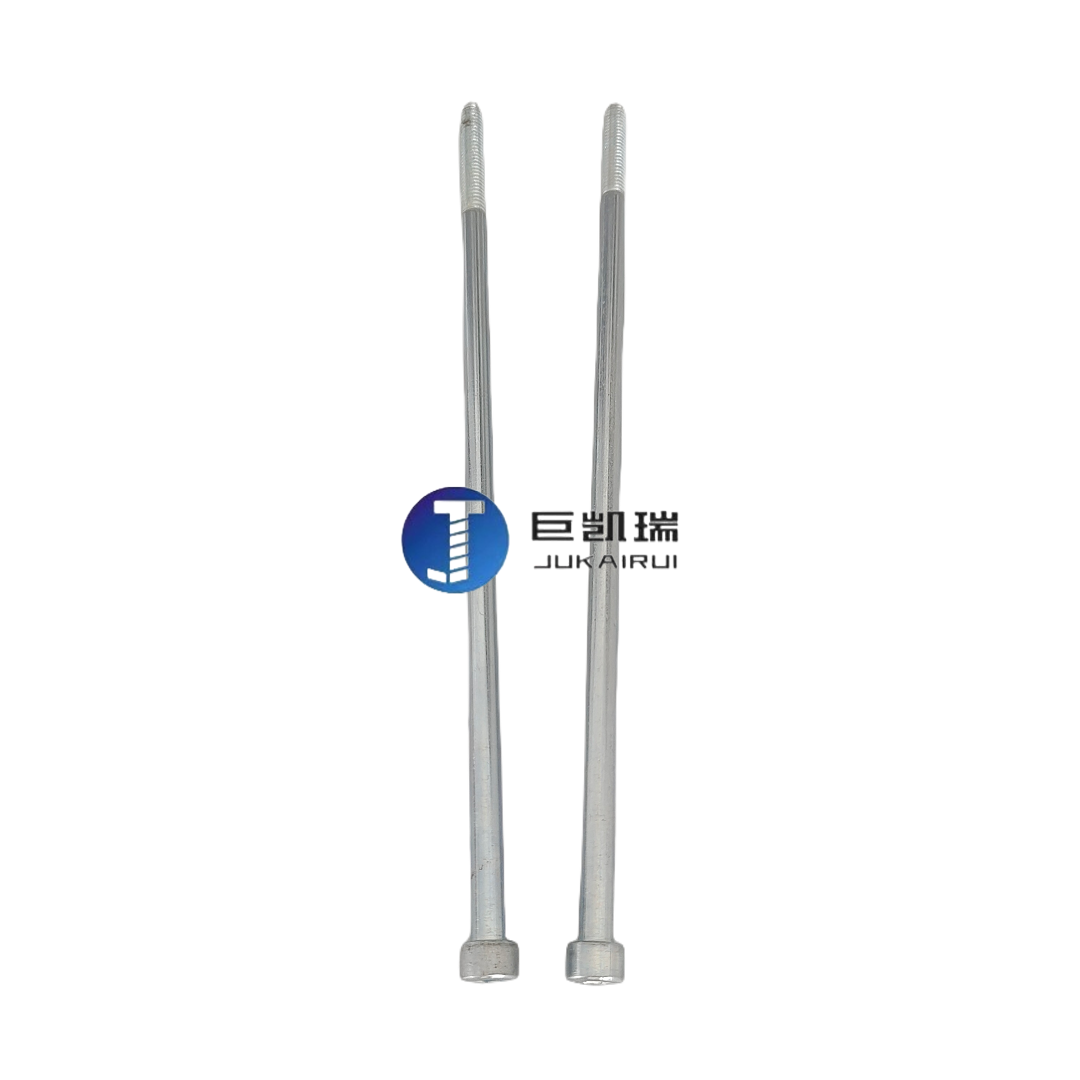Release time:2020-01-16 18:44 Browse:

In the world of fasteners, screws and bolts, as the basic and key connecting components, are widely used in many fields such as construction, machinery, aerospace and so on. In these applications, extension screws and extension bolts have become an important tool to solve long-distance connection problems because of their unique advantages. Although the two have many similarities in function, they have obvious differences in structure, use, design, and application scenarios. This article will explore the differences between lengthening screws and lengthening bolts from multiple dimensions.
### Structural differences
First of all, from the structural point of view, there is a clear difference between the lengthening screw and the lengthening bolt in appearance and structure. Extension screws, as the name suggests, are fasteners that increase in length relative to ordinary screws. It usually includes a rod part with external threads and a head, and the head has various forms, such as a flat head, a cross, etc., which is used to provide a point of impact of tightening torque. The extension bolt is more complex in structure, it not only has a rod with external threads similar to the extension screw, but also has a large, usually hexagonal head to facilitate the use of tools such as wrenches to tighten. In addition, the rod part of the bolt is often with a certain length, which is used to pass through the connected part and is tightened by matching with the nut (or nut).
### Use and function
In terms of use and function, lengthening screws and lengthening bolts also have different focuses. Due to its longer rod design, the extension screw is more suitable for applications that need to be connected over a large distance. For example, in bridge construction, in order to firmly connect the pier to the deck or beam and other components, it is often necessary to use extension screws to pass through the thick concrete layer to ensure the stability and safety of the structure. Elongated bolts, due to their head design and bearing capacity, are more commonly used in applications requiring high strength connections and fastening. In the construction field, lengthened bolts are often used to connect large components such as steel structures and high-rise buildings, as well as to connect key components in mechanical equipment, such as automotive engines, chassis, etc.
### Design features
In terms of design characteristics, there are also differences between lengthening screws and lengthening bolts. In order to meet the challenges in different application scenarios, lengthening screws are often specially treated in terms of material, strength, thread design, etc. For example, in the construction of Bridges, in order to cope with long-term wind and sun exposure and humidity changes, the extension screws may be made of high-strength alloy steel and have been treated with corrosion protection to ensure their stability and reliability. In the design of the extension bolt, in addition to considering the material and strength, but also pay attention to the design of the head for easy operation, as well as the length of the rod and the precision of the thread to ensure the tightness and firmness of the connection.
### Application scenario
In specific application scenarios, lengthening screws and lengthening bolts also show different advantages. In the field of construction, especially in the construction of high-rise buildings and large Bridges, lengthening screws have become an indispensable connector because of their ability to pass through multi-storey floors or walls to achieve long-distance connection. The lengthened bolt plays an important role in the connection of steel structure and the fixing of equipment because of its high strength and bearing capacity. In the field of machinery, lengthening bolts are widely used in the assembly and maintenance of various large mechanical equipment, such as wind turbines, heavy cranes, etc., to ensure the precise docking and stable connection between the components of the equipment.
### Purchase and install
In the purchase and installation process, the extension screws and extension bolts also have precautions. First of all, at the time of purchase, the appropriate material, strength level and thread specification should be selected according to the needs of the specific application scenario. For applications requiring high stress or high torque, choose screws or bolts with high strength grades and ensure that the material has good corrosion and wear resistance. During installation, strictly follow the operation specifications to ensure that the tightening torque of screws or bolts meets the standard requirements to avoid loosening or breakage caused by improper installation.
In summary, although the extension screw and extension bolt have many similarities in function and use, there are obvious differences in structure, design characteristics, application scenarios, and purchase and installation. Understanding these differences helps us to choose the right fasteners more accurately in practical applications, thus ensuring the stability and safety of the structure.
# Lengthening extra screw # lengthening extra screw # Lengthening screw # lengthening screw # long screw

